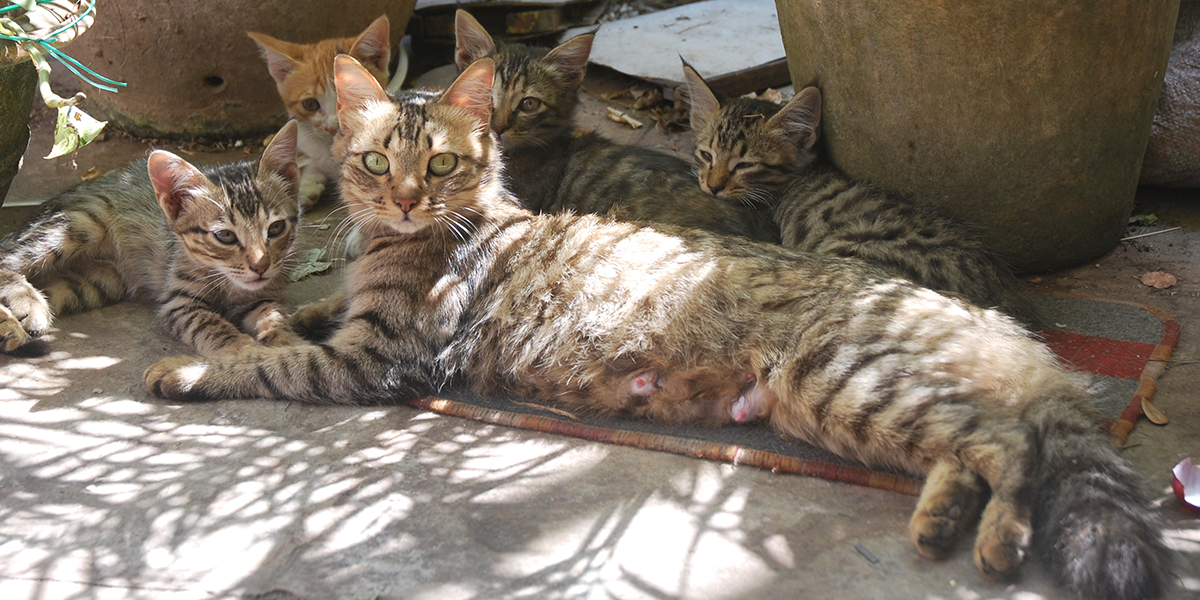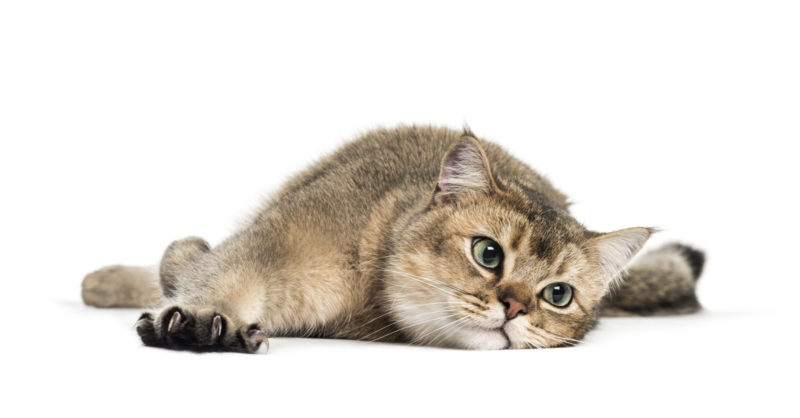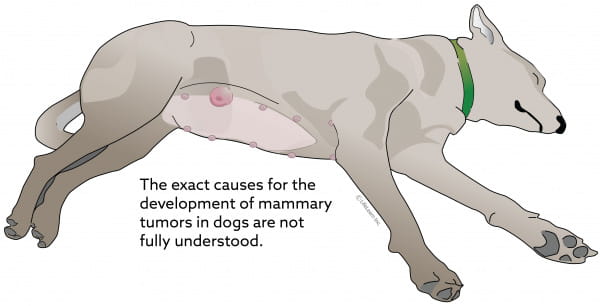mammary tumors in cats uk
The most common sites of spread are regional lymph nodes and the lungs. Mammary tumours usually develop in pets over six years old.

Mammary Carcinoma In Cats Bluepearl Pet Hospital
By spaying a cat at 6 months of age or before her first heat cycle it virtually eliminates the risk of getting mammary tumors.

. The more aggressive nature of mammary neoplasia in cats poses challenges for management. Approximately 85 of feline mammary tumors are malignant and are histologically classified as adenocarcinomas. In dogs almost half of these are malignant.
In cats most are. However these can be signs of many other illnesses as well. This risk is eliminated if a pet is spayed before her first season.
Other forms of breast and mammary cancer in a cat include adenomas duct papillomas and sarcomas. Sarcomas mucinous carcinomas duct papillomas adenosquamous carcinomas and adenomas are rarely seen. The information on this page concerns the situation for our feline friends.
This type of cancer is actually the third most common in cats preceded by lymphoma and skin tumors. In cats most mammary tumors 80-96 are malignant. Mammary cancer is usually a malignant adenocarcinoma that appears in one or more of a cats breasts.
Sarcoma SCC and mucinous carcinoma subtypes are less common. A mammary tumor develops because of abnormal replication of the cells that make up the breast tissue. In cats and dogs mammary tumors can be seen in a single breast lobe and also it can be seen in all breast lobes at the same time.
On the other hand lung adenocarcinoma can cause progressive cough and respiratory distress in small cats. Mammary tumors are the tumors which can spread directly to the mammary tissues from the primary tumor focus either directly starting in the mammary gland or through metastasis spreading. What if your cat already has mammary tumors.
Non-healing sores should also be investigated. Other signs of tumours benign or cancerous affecting internal organs can include loss of appetite weight loss lethargy and weakness difficulty in breathing limping and recurrent digestive problems. This type of cancer usually tends to obstruct breathing causing snoring and snorting in cats.
15 of feline mammary tumors are either benign or dysplastic. The risk is much lower for spayed female dogs male dogs and cats of either. Mammary tumors in cats are usually malignant 85-93 80 of feline mammary tumors are ADC with tubular papillary solid and cribriform subtypes most common.
Mammary tumors of dogs and cats. In cats most mammary tumors 80-96. Although the tumor can become fixed at its point of origin it will usually spread to the lymph nodes and.
Mammary cancer is the third most common cancer in cats. What causes mammary tumors in cats. When it appears in cats it can be fatal even if treated with surgery radiation and chemotherapy.
In the cat mammary cancer is the third most common cancer with the most common victim being a senior. Invasion ulceration lymphatic invasion and lymph node metastasis is common. Mammary cancer comprises a spectrum of neoplastic diseases but one clinical entity which deserves particular attention is the inflammatory mammary.
Mammary tumors develop because of spikes in female hormone estrogens that take place during a cats heat cycle. These tumors may originate in the. Cats spayed before 6 months of age have a 7-times reduced risk of developing mammary cancer and spaying at any age reduces the risk of mammary tumors by 40 to 60 in cats.
These two forms of the disease have different diagnostics treatments management and prognosis. The average age of affected cats is 10-11 years of age. Mammary tumors can be benign non-cancerous or malignant cancerous.
Females as well as males can develop this form of cancer. More than a quarter of unspayed female dogs will develop a mammary tumor during their lifetime. The benign mammary gland dysplasias lobular hyperplasia and fibroepithelial hyperplasia are less common.
But the most common are nose cancer in cats such as adenocarcinoma affecting the nose or lungs or nasal lymphoma. Mammary tumors in cats uk. Even spaying after one season still reduces her risk by over 90 percent.
Mammary tumors in cats also known as breast cancer in cats occur when normal cells in the mammary gland transform into tumor cells that can multiply and invade nearby or distant tissues by hematogenous or lymphatic routes. Before any diagnostic or. Almost 90 of feline mammary tumors are malignant meaning they have the potential to spread to other portions of the body.
An unspayed female has a one in four chance of developing a mammary tumour.

Cat Breast Cancer Causes Symptoms And Treatment Of Mammary Cancer

Melissa A1115312 Brooklyn To Be Destroyed 06 19 17 12 Year Old Melissa Has An Ulcerated Mammary Tumor On He Cat Adoption Foster Cat Cute Animals
/https://tf-cmsv2-smithsonianmag-media.s3.amazonaws.com/filer/d1/33/d133235a-688f-4faf-8166-a7532321c1db/felix-44.jpg)
Cats Get Breast Cancer Too And There S A Lot We Can Learn From It Science Smithsonian Magazine

11 Year Old Dog Gets Large Mammary Tumor Removed Dr Jeff Rocky Mountain Vet Youtube

Mammary Tumors In Dogs Cats The Meowing Vet

Top Four Cat Cancers Vetsavers Pet Hospital

Denny A1102314 Brooklyn To Be Destroyed 02 02 17 A Volunteer Writes The First Thing People Notice Abou Pet Adoption Animal Help New York Animals

Mammary Tumors In Dogs Cats The Meowing Vet

Surgical Treatment For Mammary Tumors Clinician S Brief

Bianca Recently Had Kittens And Her Owner Dumped Her By Herself At The Shelter She Has Enlarged Mammary Glands On The Righ Cat Adoption Cute Animals Cute Cats

Mammary Tumors In Dogs Cats The Meowing Vet

Mammary Tumors In Dogs Malignant Vca Animal Hospital

Cat Breast Cancer Causes Symptoms And Treatment Of Mammary Cancer

Denny A1102314 Brooklyn To Be Destroyed 02 02 17 A Volunteer Writes The First Thing People Notice Abou Pet Adoption Animal Help New York Animals

Mammary Carcinoma International Cat Care

Cat Breast Cancer Causes Symptoms And Treatment Of Mammary Cancer

Mastitis In Cats Causes Diagnosis Treatment And Prevention Daily Paws

